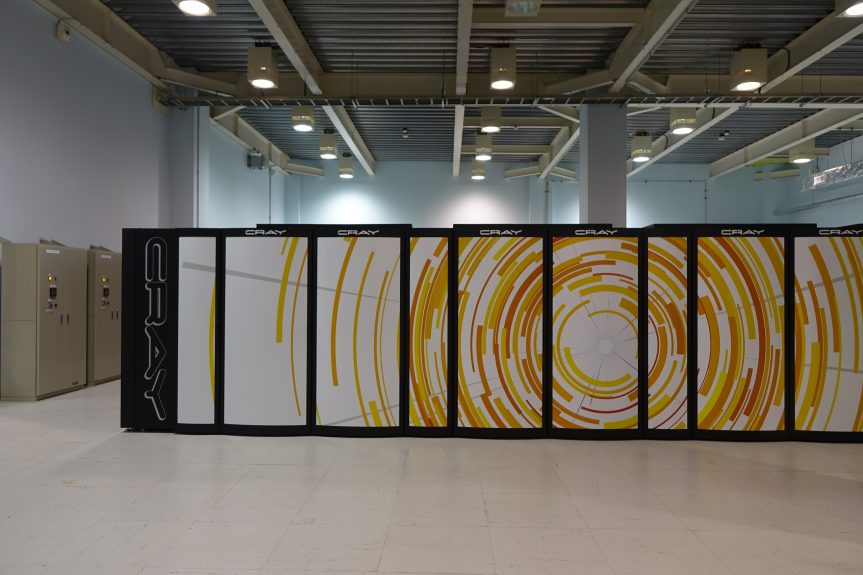Europe and Japan invest in supercomputers to boost fusion research

Four racks of equipment form the JFRS-1 supercomputer, in the Computational Simulation Centre room in Rokkasho, Japan. ©QST
As scientists break new ground in fusion know-how, the numerical models simulating what happens inside a reactor have become more complex and the data available has grown exponentially. In fact, the number of equations goes far beyond the capacity of conventional computers. Running them calls for a horsepower that only high-performance computing (HPC) can offer.
Since 2012, Europe and Japan leverage HPC together through the Computational Simulation Centre (CSC), part of the International Fusion Energy Research Centre (IFERC). The CSC gives European and Japanese fusion researchers the possibility to use top-tier equipment without any cost. In a yearly call, a panel of scientists from both parties examines the proposals and allocates them time to use it. It’s a terrific opportunity for those wishing to understand more for fusion devices like ITER, JT-60SA or DEMO.
The new cycle of simulations started last April and will run until March 2025. Throughout the next year, the CSC will host 29 projects, including 8 joint Euro-Japanese joint simulations. “As set in the Broader Approach agreement, the CSC aspired to become a reference tool for the fusion community in Europe and Japan. The ambitious commitment of resources and diligent day-to-day management by the teams and suppliers have made this possible”, claims Raúl Guillén, CSC project manager at Fusion for Energy (F4E).
In Rokkasho, Japan, four rows of electronic racks fill the CSC room with the loud whirring of their cooling fans. The Japan Fusion Reactor Simulator (JFRS-1) is running non-stop. Owned by QST, this supercomputer is the main engine of the second phase of the CSC since 2020. JRFS-1 substituted the supercomputer Helios, procured and operated by F4E from 2012 to 2016. At the time, Helios ranked among the top ten most powerful computers in the world.

In addition, EUROfusion is providing F4E with complementary resources for the CSC from Marconi, one of the most important supercomputers in Europe, at the CINECA facilities in Bologna, Italy. This fraction of HPC time dedicated to fusion will come soon under a new improved system named Pitagora.
There is no need, however, for scientists to travel to the data halls in Japan or Italy. With the technical support of the CSC teams, they can run their codes remotely and shed mathematical light on a wide range of fusion-related questions. From plasma turbulence models to the development of new-generation materials, the simulations have resulted so far into a large and diverse number of publications.
Among the clients of the CSC there is also F4E. Marco Fabbri, technical project officer at the Engineering Unit of F4E, is convinced of its value: “We need supercomputers to accurately calculate radiation transport, a vital information for the safety and design of ITER and JT-60SA. The random behavior of particles in three-dimensional spaces associated with the large amount of shielding demands great computational power and memory. Thanks to HPC, we can simulate highly detailed scenarios in a fraction of the time that conventional computing takes”.